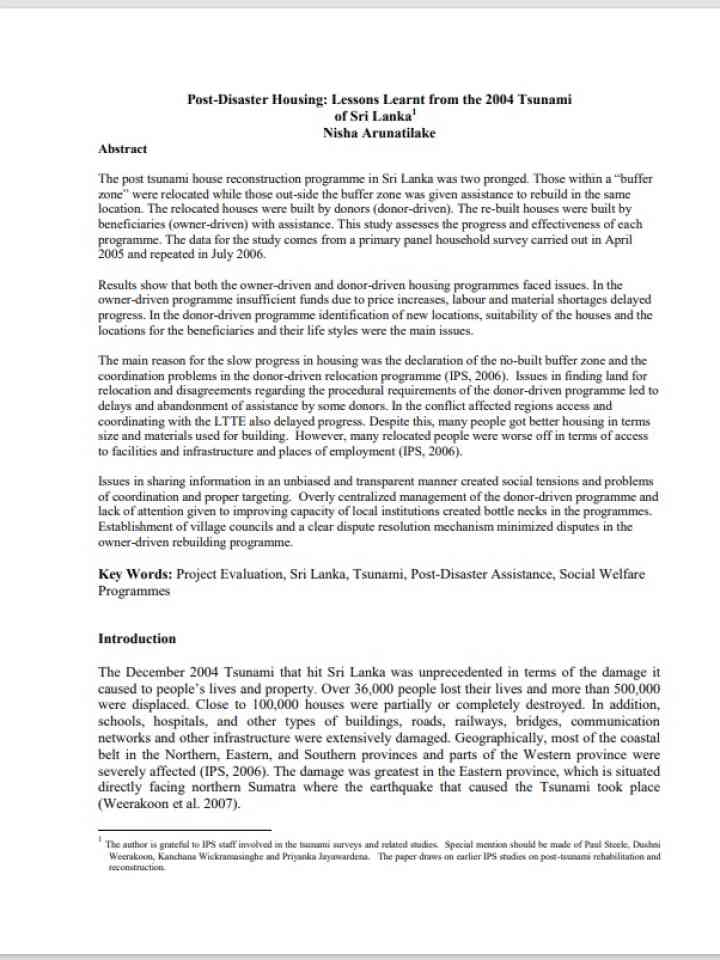Post-disaster Housing: Lessons Learnt from the 2004 Tsunami of Sri Lanka
The post tsunami house reconstruction programme in Sri Lanka was two pronged. Those within a "buffer zone" were relocated while those out-side the buffer zone was given assistance to rebuild in the same location. The relocated houses were built by donors (donor-driven). The re-built houses were built by beneficiaries (owner-driven) with assistance.
This study assesses the progress and effectiveness of each programme. The data for the study comes from a primary panel household survey carried out in April 2005 and repeated in July 2006. Results show that both the owner-driven and donor-driven housing programmes faced issues. In the owner-driven programme insufficient funds due to price increases, labour and material shortages delayed progress. In the donor-driven programme identification of new locations, suitability of the houses and the locations for the beneficiaries and their life styles were the main issues.
The main reason for the slow progress in housing was the declaration of the no-built buffer zone and the coordination problems in the donor-driven relocation programme (IPS, 2006). Issues in finding land for relocation and disagreements regarding the procedural requirements of the donor-driven programme led to delays and abandonment of assistance by some donors. In the conflict affected regions access and coordinating with the LTTE also delayed progress. Despite this, many people got better housing in terms size and materials used for building. However, many relocated people were worse off in terms of access to facilities and infrastructure and places of employment (IPS, 2006).
Issues in sharing information in an unbiased and transparent manner created social tensions and problems of coordination and proper targeting. Overly centralized management of the donor-driven programme and lack of attention given to improving capacity of local institutions created bottle necks in the programmes. Establishment of village councils and a clear dispute resolution mechanism minimized disputes in the owner-driven rebuilding programme
Explore further
